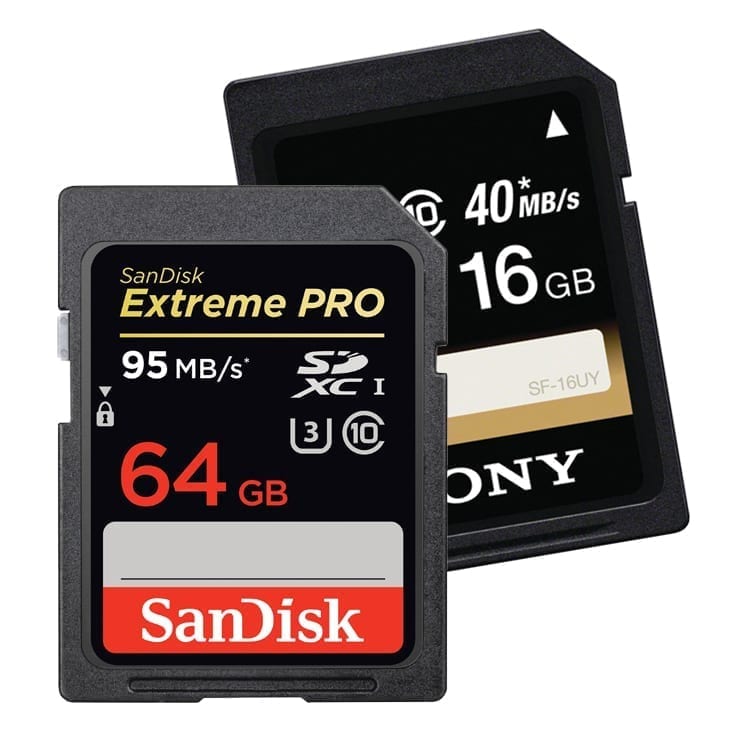Sony
Adopting the 2nd generation PCIe interface, and using an upgraded built-in controller, the Sony 128GB SxS PRO+ C Series Memory Cardoffers double the read speed and just about double the write speed of the previous, B Series models, even with high frame rate 4K content.
The maximum read speed is 3.5Gbps and maximum write speed is 2.8Gbps. The minimum write speed is 1.3Gbps, which, when combined with the efficiency of the new controller and anti speed degradation functions, ensures stable recording in XAVC 4K 60p and XAVC HD 180p modes when used with compatible Sony cameras such as the F5 and F55 (at 600Mbps in both modes).
In addition to improved capture capability, the card also provides a set of safety features, namely, data refreshing, data error correct, power failure management for recreating video clips in case of power loss or card ejection, and wear-leveling data defect minimization for secure data recording. It is also housed in a dustproof case. Each card is subjected to a series of quality assurance tests including checks on recording blocks, temperature cycles, and operating environment.
SanDisk
The size of a matchbook and weighing just half an ounce, SanDisk’s CompactFlash memory cards deliver high-capacity flash memory in a rugged small form factor. As the pioneer in CF, SanDisk delivers cards with unparalleled quality and performance. High Quality and Performance SanDisk flash memory cards are built with SanDisk non-volatile memory and have no moving parts to wear out or break.

>Compact Flash is the oldest memory card format still in use. They’ve disappeared from most beginner and enthusiast DSLRs, but are still going strong in the top-end pro models.
They come in two types, and Type I cards fit all cameras. Type II cards are fatter, and are no longer made or supported.
Most Type II ‘cards’ were a clever but fragile miniature hard disk ‘MicroDrive’ design, but solid state Type I cards have long since outstripped the capacity of Type II cards.
SD cards are the most common memory cards for cameras, and are used across most camera ranges range except for in top-end pro models. Although all SD memory cards are physically the same, there are three types. SD cards are the oldest and will work in any camera with an SD card slot.
SDHC cards are newer but only work in SDHC-compatible cameras (see the list overleaf). SDXC cards are newer still and need an SDXC-compatible camera.
Finally, XQD is a brand-new format used in the Nikon D4s (and D4) that we mentioned earlier. The cards offer potentially huge capacities and ultra-fast data transfer speeds. See more below.
XQD™ memory cards provide up to 168MB/s read and write transfer speeds, which is ideal for professional shooting applications.
-
- Memory card used for transferring large capacity of data at high speed
- Up to 168MB/s transfer speed (write and read)1
- Designed for the professional photographer to enhance high resolution images and HD video applications
- Captures over 100 frames in RAW format in continuous shooting mode2
- Highly reliable to protect users data and images
- Media is durable and reliable to protect data and images
- File Rescue downloadable software3 helps recover photos and videos that have been accidentally damaged or deleted. File Rescue software offers the support of Nikon D4 RAW and MOV file formats.
- Capacities available in 32GB and 64GB4
Flash Memory Sticks
Take your favorite photos, music, documents and other files with you on your adventures with portable flash drives, which are light and compact, meaning they can slip easily into a bag or slide easily into a laptop or other device’s USB port for blazing-fast plug-and-play functionality. Look for designs featuring a keyring and a rubberized or textured cover for easy handling and portability.
Storage Capacity
Whether you’re storing a large presentation or just a few of your favorite music files and photos, flash drives feature a variety of storage capacities to meet your needs. Storage generally ranges from 4GB to 128GB, and covers help keep the device hardware secure to preserve the integrity of your data. If you desire or need a larger amount of storage, consider other data storage and media, and for massive amounts of storage, consider tape automation drives.






